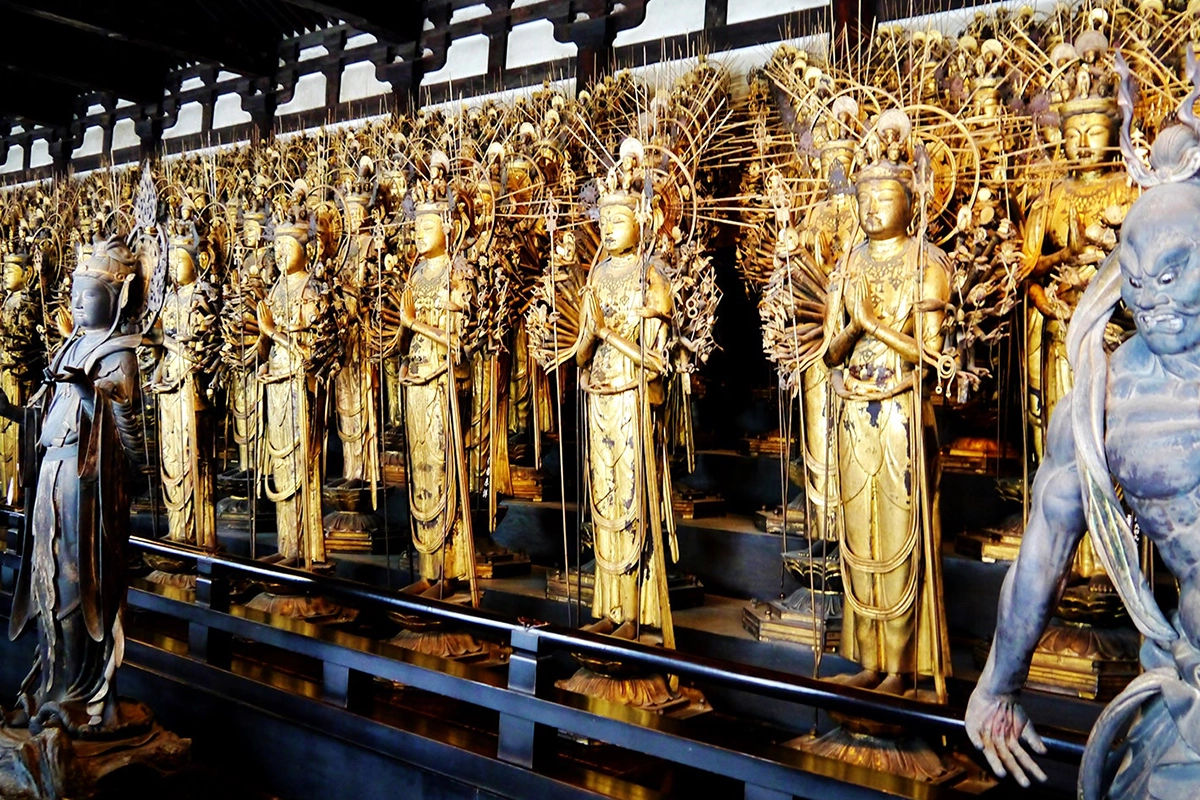Sanjusangendo Temple: A Journey Through Time and Mercy in Kyoto
Nestled in the heart of Kyoto, Japan, Sanjusangendo, also known as Rengeo-in Temple, is a place where history, spirituality, and artistry converge to create an awe-inspiring experience for travelers. This renowned Buddhist temple, standing for over eight centuries, is a testament to Japan’s rich cultural heritage. Its most captivating feature is the hall housing 1,001 wooden statues of Kannon, the Buddhist goddess of mercy.
Sanjusangendo’s story begins in 1164 when it was first constructed by Taira no Kiyomori, a formidable military leader of his time, as a tribute to his mother’s spirit. However, fate dealt a cruel hand as the original structure succumbed to fire in the late 12th century. It was not to be forgotten, though, as during the Kamakura period (1185-1333), it was meticulously reconstructed to honor its historical significance.
What sets Sanjusangendo apart is its namesake feature—the remarkable assembly of 1,001 statues of Kannon, each with a unique expression and posture. This collection of sculptures is housed within the temple’s expansive hall, which boasts the title of being the longest wooden structure in Japan, stretching a remarkable 120 meters in length. The statues, sculpted in the 12th and 13th centuries, are arranged in ten meticulously ordered rows, with the central figure of the Thousand-Armed Kannon reigning supreme, flanked by 500 statues on each side.
The Thousand-Armed Kannon, the focal point of this mesmerizing ensemble, stands as a symbol of compassion and aid. This awe-inspiring statue measures approximately 3.3 meters in height and is a national treasure of Japan. It is believed to be the work of the celebrated sculptor Tankei. Its thousand arms, a striking feature, symbolize the goddess’s ability to reach out and extend her helping hand to those in need—a powerful representation of mercy that continues to resonate with visitors today.
Through the centuries, Sanjusangendo has witnessed numerous renovations and restorations, with the most recent occurring in the 17th century. These efforts have ensured that the temple stands as a pristine testament to its historical significance.
While the temple’s interior is undeniably captivating, its surroundings are equally enchanting. Sanjusangendo boasts a beautiful garden, coming to life in a riot of colors during the cherry blossom season in spring. Strolling through the serene garden while cherry blossoms gently fall is a surreal experience, offering a tranquil escape from the bustling city.
Sanjusangendo has not only preserved its historical and spiritual significance but has also embraced the modern world by becoming a sought-after tourist destination in Kyoto. It attracts thousands of visitors each year who come to marvel at the temple’s unique blend of history, art, and spirituality.
Visitors to Sanjusangendo have the opportunity to immerse themselves in traditional Japanese culture by participating in activities such as the tea ceremony. The temple provides a glimpse into the world of Japanese customs and rituals, enriching the travel experience.
Throughout the year, Sanjusangendo hosts various events that offer travelers a deeper insight into Japanese traditions. From archery contests to solemn Buddhist ceremonies, these events allow visitors to witness the living heritage of this extraordinary temple.
In conclusion, Sanjusangendo, or Rengeo-in Temple, is a place where time stands still, and mercy flows through the very air you breathe. Its history, breathtaking artistry, and cultural offerings make it a must-visit destination in Kyoto, Japan. Whether you seek spiritual enlightenment, historical intrigue, or simply a moment of serenity amidst nature, this temple has it all. Come and discover the harmonious blend of past and present in the heart of Kyoto—a journey you’ll cherish for a lifetime.
